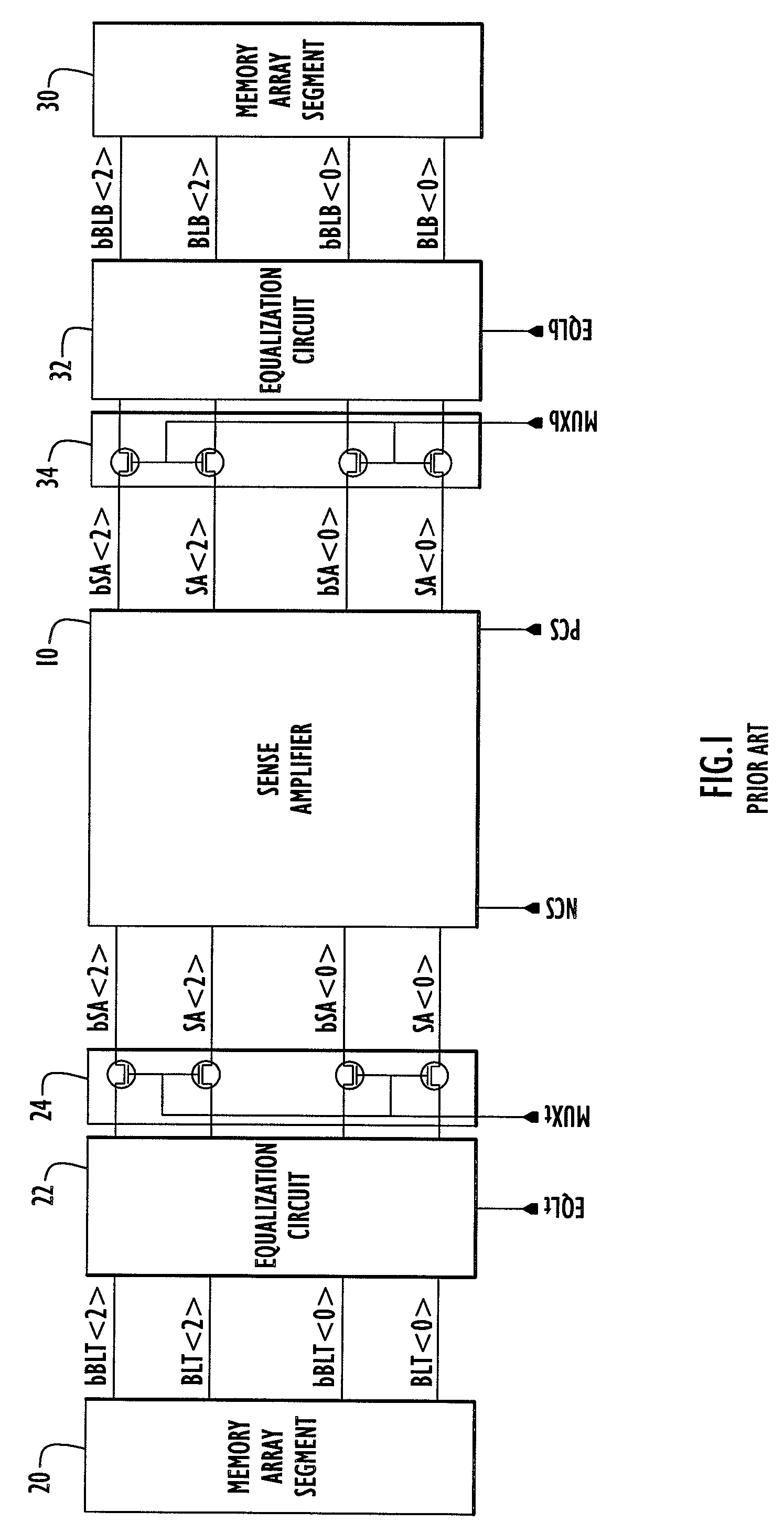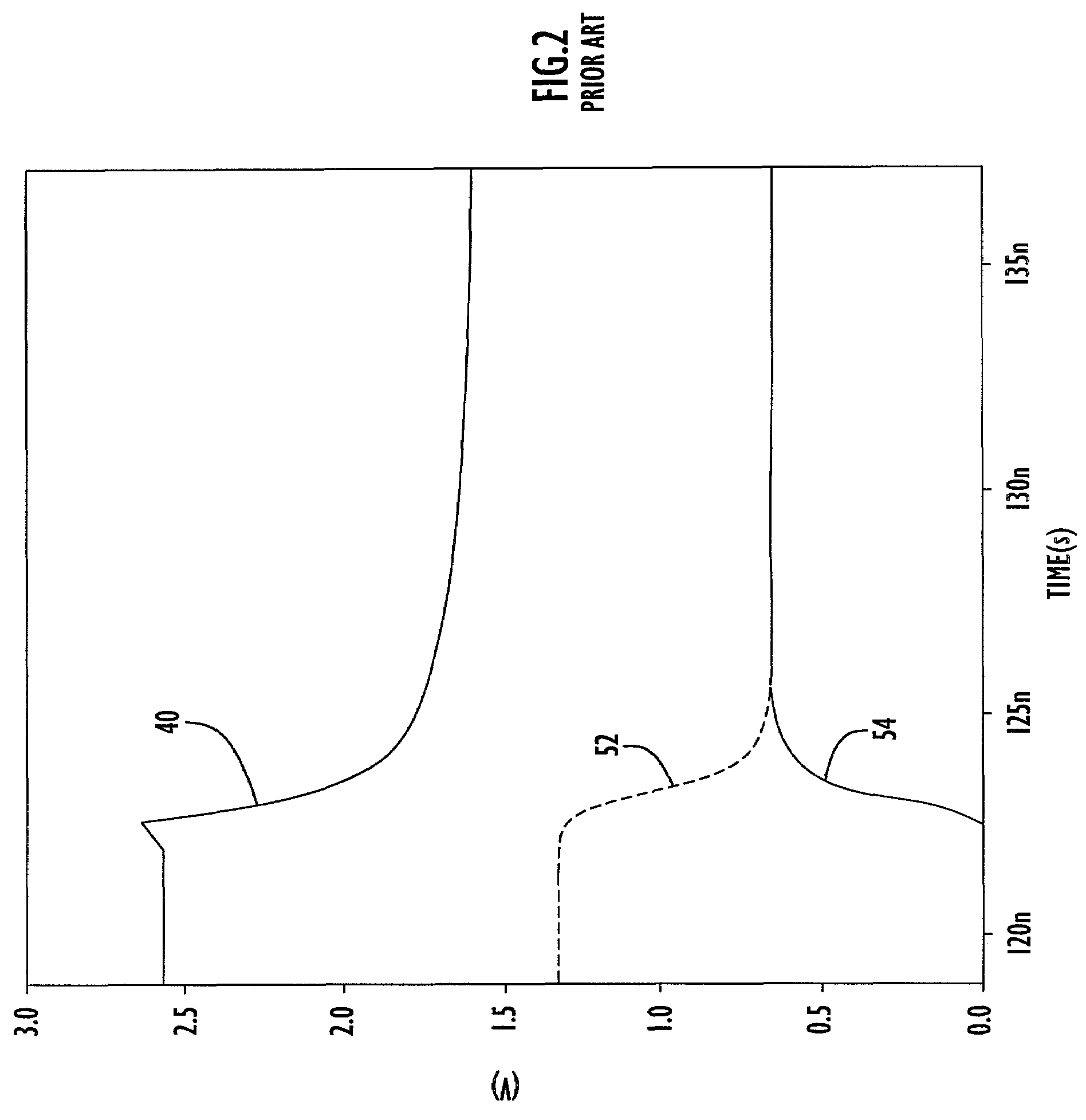Delayed sense amplifier multiplexer isolation
a sense amplifier and multiplexer technology, applied in the field of delayed sense amplifier multiplexer isolation, can solve the problem that the sense node of the sense amplifier is not given enough time, and achieve the effect of reducing the number of sense nodes and preventing the sense amplifier from being isolated from the memory array segmen
- Summary
- Abstract
- Description
- Claims
- Application Information
AI Technical Summary
Benefits of technology
Problems solved by technology
Method used
Image
Examples
Embodiment Construction
[0019]FIG. 1 illustrates a sense amplifier circuit arrangement used in a state-of-the art dynamic random access memory (DRAM) device. A sense amplifier 10 has complementary sense node pairs bSA2>,SA2>and bSA0>,SA0>that are used to sense and amplifier a bitline potential difference in a memory array segment 20 on a first side (“t” side) or in a memory array segment 30 on a second side (“b” side). On the “t” side of the sense amplifier 10 there is an equalization circuit 22 that connects to the complementary bitline (BL) pairs bBLT2>,BLT2>and bBLT0>,BLT0>associated with a first memory array segment 20, and a multiplexer circuit 24. In response to an equalization control signal EQLt, the equalization circuit 22 precharges and equalizes voltage on the BL pairs that are associated with the memory array segment 20. Based on the state of a multiplexer control signal MUXt, the multiplexer circuit 24 controls whether the sense amplifier 10 is connected to or disconnected from the BL pairs as...
PUM
 Login to View More
Login to View More Abstract
Description
Claims
Application Information
 Login to View More
Login to View More - R&D
- Intellectual Property
- Life Sciences
- Materials
- Tech Scout
- Unparalleled Data Quality
- Higher Quality Content
- 60% Fewer Hallucinations
Browse by: Latest US Patents, China's latest patents, Technical Efficacy Thesaurus, Application Domain, Technology Topic, Popular Technical Reports.
© 2025 PatSnap. All rights reserved.Legal|Privacy policy|Modern Slavery Act Transparency Statement|Sitemap|About US| Contact US: help@patsnap.com



